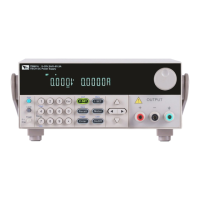Remote Control
Copyright © Itech Electronic Co., Ltd. 3
Including Common Commands
You can combine common commands with subsystem commands in the
same message. Treat the common command as a message unit by
separating it with a semicolon (the message unit separator). Common
commands do not affect the header path; you may insert them anywhere
in the message.
VOLTage:TRIGgered 17.5;:INITialize;*TRG
OUTPut OFF;*RCL 2;OUTPut ONIT872X-3X SCPI Communication protocol 17
Case sensitivity
Common commands and SCPI commands are not case sensitive. You
can use upper or lower
,
for example:
*RST = *rst
:DATA? = :data?
:SYSTem:PRESet = :system:preset
Long-form and short-form versions
A SCPI command word can be sent in its long-form or short-form version.
However, the short-form version is indicated by upper case characters.
Examples:
:SYSTem:PRESet long-form
:SYST:PRES short form
:SYSTem:PRES long-form and short-form combination
Note that each command word must be in long-form or short-form, and
not something in between.
For example, :SYSTe:PRESe is illegal and will generate an error. The
command will not be executed.
Query
Observe the following precautions with queries:
Set up the proper number of variables for the returned data. For example, if
you are reading back a measurement array, you must dimension the array
according to the number of measurements that you have placed in the
measurement buffer.
Read back all the results of a query before sending another command to
the electronic load. Otherwise a Query Interrupted error will occur and the
unreturned data will be lost.
1.4 Message Type of SCPI
There are two types of SCPI messages, program and response.
program message: A program message consists of one or more properly
formatted SCPI commands sent from the controller to the electronic load.
The message, which may be sent at any time, requests the electronic load
to perform some action.
response message: A response message consists of data in a specific

